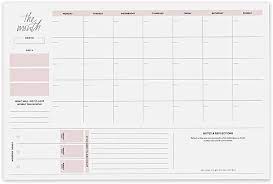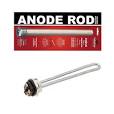The Essential Tool for Organization: The Planner
In today’s fast-paced world, staying organized is key to managing our daily lives effectively. One of the most valuable tools for organization is the humble planner. A planner is more than just a notebook; it is a powerful tool that helps us prioritize tasks, set goals, and track our progress.
Why Use a Planner?
A planner provides structure to our days, weeks, and months. By jotting down important dates, appointments, and to-dos, we can ensure that nothing slips through the cracks. It helps us manage our time efficiently and avoid last-minute rushes or missed deadlines.
Furthermore, a planner allows us to set goals and break them down into manageable steps. By outlining our objectives and creating a plan to achieve them, we increase our chances of success and stay motivated along the way.
Types of Planners
Planners come in various formats to suit different preferences and needs. Some people prefer traditional paper planners for their tactile feel and ease of customization. Others opt for digital planners that sync across devices for easy access on the go.
There are daily planners for detailed scheduling, weekly planners for an overview of the week ahead, and monthly planners for long-term planning. Additionally, specialized planners cater to specific purposes such as fitness tracking, meal planning, or budgeting.
Tips for Using a Planner Effectively
- Set aside time each day to review your planner and update it with new tasks or events.
- Prioritize your tasks by importance and deadline to focus on what matters most.
- Use color-coding or symbols to categorize tasks (e.g., work-related, personal, urgent).
- Include both short-term and long-term goals in your planner to stay motivated.
- Take advantage of reminders or alerts if using a digital planner to stay on track.
The Power of Planning
By incorporating a planner into your daily routine, you take control of your schedule and increase productivity. Whether you are a student juggling assignments, a professional managing multiple projects, or simply someone looking to stay organized in their personal life, a planner can be your best ally in achieving success.
Top 5 FAQs About Using Planners to Boost Organization and Productivity
- 1. How can I effectively use a planner to stay organized?
- 2. What are the different types of planners available and which one is best for me?
- 3. How do I prioritize tasks and set achievable goals in my planner?
- 4. Are digital planners better than traditional paper planners, and why?
- 5. What are some tips for maintaining consistency in using a planner on a daily basis?
1. How can I effectively use a planner to stay organized?
To effectively use a planner to stay organized, start by setting aside dedicated time each day to review and update your planner. Prioritize tasks by importance and deadline, ensuring that you focus on what matters most. Consider using color-coding or symbols to categorize tasks, making it easier to identify and tackle them efficiently. Include both short-term and long-term goals in your planner to stay motivated and on track. Take advantage of reminders or alerts if using a digital planner to ensure you don’t miss any important deadlines or appointments. By utilizing these strategies, you can harness the full potential of your planner as a powerful tool for organization and productivity.
2. What are the different types of planners available and which one is best for me?
When considering the different types of planners available, it’s essential to understand your specific needs and preferences to determine the best fit for you. Various types of planners cater to different organizational styles and purposes, such as daily, weekly, monthly, or specialized planners for tasks like fitness tracking or meal planning. If you prefer detailed scheduling and enjoy breaking down tasks day by day, a daily planner might suit you best. On the other hand, if you prefer a broader overview of your week with space for goal setting and priorities, a weekly planner could be more suitable. Ultimately, the best planner for you will align with your organizational habits and help you stay on top of your commitments effectively.
3. How do I prioritize tasks and set achievable goals in my planner?
Prioritizing tasks and setting achievable goals in your planner is essential for effective time management and productivity. Start by listing all your tasks and goals, then identify the most important or urgent ones. Consider factors like deadlines, importance, and impact. Break down larger goals into smaller, actionable steps to make them more manageable. Use tools like color-coding or symbols to categorize tasks based on priority. Regularly review and adjust your task list as needed to stay on track and ensure that you are making progress towards your goals. By setting clear priorities and breaking down goals into achievable steps, you can maximize the efficiency of your planner and increase your chances of success.
4. Are digital planners better than traditional paper planners, and why?
When considering whether digital planners are superior to traditional paper planners, the answer ultimately depends on individual preferences and needs. Digital planners offer the convenience of syncing across devices, easy editing, and the ability to set reminders. On the other hand, traditional paper planners provide a tactile experience, freedom for creative customization, and do not require battery power. Some people find that writing things down on paper helps with memory retention and focus. Ultimately, the choice between digital and paper planners comes down to personal preference in terms of organization style, accessibility, and comfort with technology.
5. What are some tips for maintaining consistency in using a planner on a daily basis?
Consistency in using a planner on a daily basis is essential for maximizing its effectiveness. Here are some tips to help maintain that consistency: Firstly, designate a specific time each day to review and update your planner, such as in the morning before starting your day or in the evening to plan for the next day. Secondly, make it a habit to carry your planner with you wherever you go, ensuring easy access to jot down new tasks or events as they arise. Thirdly, prioritize tasks and set realistic goals to avoid feeling overwhelmed and stay on track. Lastly, regularly reflect on your progress and adjust your planning approach as needed to ensure continued motivation and productivity. By incorporating these tips into your routine, you can establish a consistent planning habit that leads to better organization and time management.




